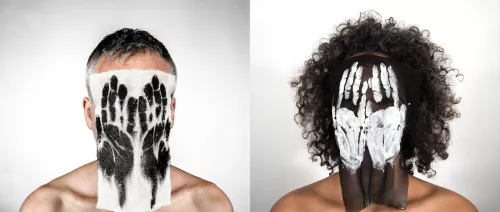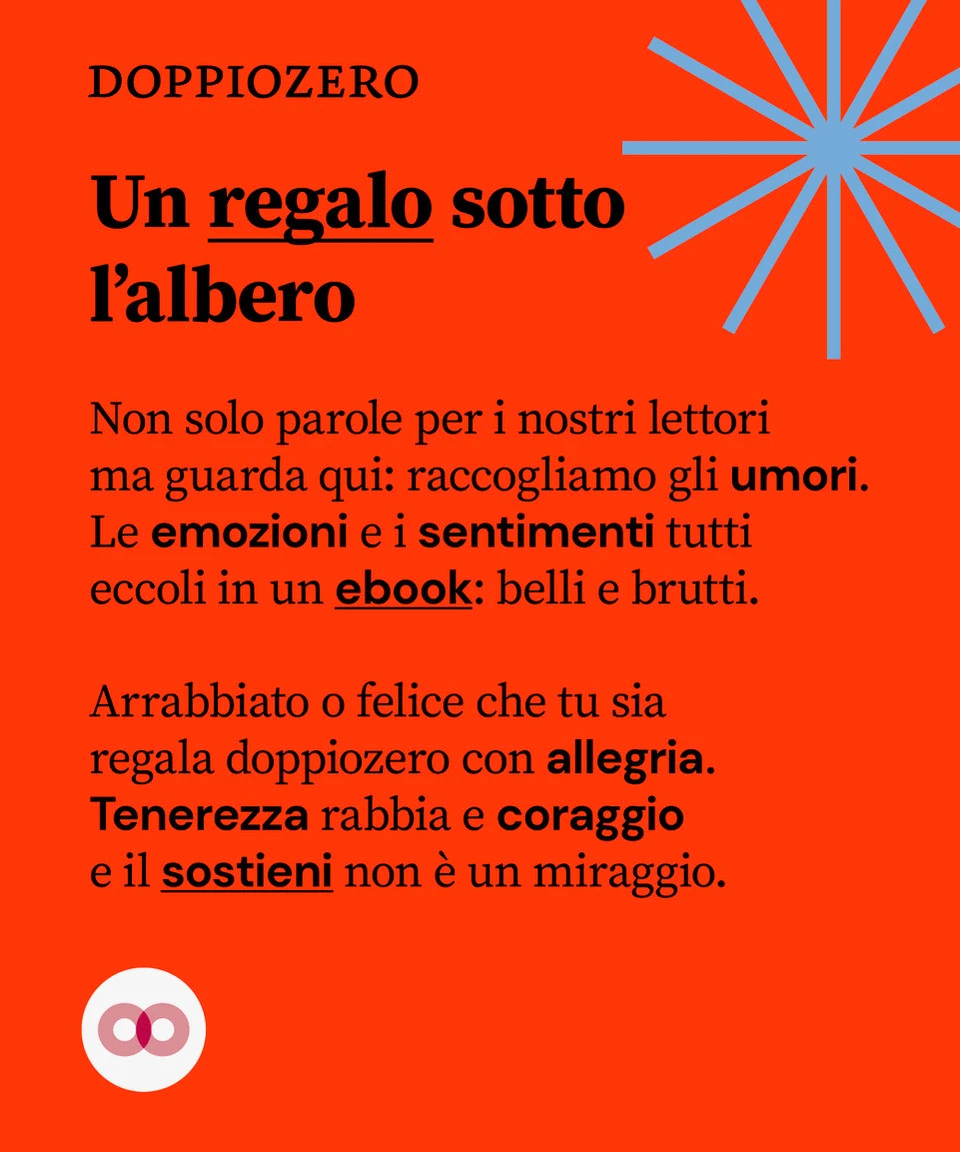Speciale
Africa In The New Century
Originally presented in a lecture series and later compiled in The Philosophy of History (Germany, 1837), Hegel adds: “The Negro … exhibits the natural man in his completely wild and untamed state. We must lay aside all thought of reverence and morality—all that we call feeling—if we would rightly comprehend him. There is nothing harmonious with humanity to be found in this type of character.” Hegel then promises himself not to ever mention Africa again, for “it is no historical part of the World; it has no movement or development to exhibit.” What we properly understand by Africa, he concludes, “is the Unhistorical, Undeveloped Spirit, still involved in the conditions of mere nature.”
More than a century after Hegel’s ruminations, Robert D. Kaplan, a US journalist and policy pundit, published “The Coming Anarchy,” a devastating portrayal of West Africa in the February 1994 issue of the US-monthly magazine, The Atlantic. The Cold War had just ended and most of the western world was triumphantly riding on the crest of a wave of optimism. Celebrating this triumph—of the west and of what he called the western idea—Francis Fukuyama, writing in a 1989 issue ofThe National Interest, an American bi-monthly international affairs magazine, suggested, “what we may be witnessing is not just the end of the Cold War, or the passing of a particular period of post-war history, but the end of history as such.” By “the end of history as such,” Fukuyama did not simply mean the end point of mankind’s ideological evolution. More fundamentally, he meant the reconciliation of the market principle and the idea of freedom, and “the universalization of western liberal democracy as the final form of human government.”
But, projecting himself to the day and times after history had ended, Fukuyama could only see melancholia and sadness, a profound nostalgia for the Hegelian world: “The end of history will be a very sad time.
The struggle for recognition, the willingness to risk one’s life for a purely abstract goal, the worldwide ideological struggle that called forth daring, courage, imagination, and idealism, will be replaced by economic calculation, the endless solving of technical problems, environmental concerns, and the satisfaction of sophisticated consumer demands. In the post-historical period there will be neither art nor philosophy, just the perpetual care-taking of the museum of human history.”
 Mwangi Hutter, dark ease ease 2016, courtesy of the artists.
Mwangi Hutter, dark ease ease 2016, courtesy of the artists.
As Fukuyama wrote his epitaph to history, Africa was in the midst of a spectacular collision. Apartheid and white minority rule were coming to a formal end in South Africa while a genocide of cataclysmic proportions was unfolding in Rwanda. Liberation and apotheosis of long years of struggle on the one hand, self-destruction on the other. Declining per capita incomes and production, low levels of savings and investment, slow growth in agricultural production, failing export earnings, strangled imports and unserviceable foreign debt burdens—all plagued most of sub-Saharan Africa.
In his scenario for the 21st century, Kaplan argued that West Africa in particular was becoming: “the symbol of worldwide demographic, environmental and societal stress, in which criminal anarchy emerges as the real ‘strategic’ danger. Disease, overpopulation, unprovoked crime, scarcity of resources, refugee migrations, the increasing erosion of nation-states and international borders, and the empowerment of private armies, security firms, and international drug cartels are now most tellingly demonstrated through a West African prism.
” In Kaplan’s geography—just as in Hegel’s a century earlier—West Africa became the epitome of those regions of the world where central governments were withering away, tribal and regional fiefdoms were on the rise, and war had turned pervasive.
West Africa, Kaplan argued, was reverting “to the Africa of the Victorian atlas.” He added: “It consists now of a series of coastal trading posts, such as Freetown and Conakry, and an interior that, owing to violence, volatility, and disease, is again becoming, as Graham Greene once observed, ‘blank’ and ‘unexplored’.” Kaplan invoked the English political economist Thomas Malthus, describing him as “the philosopher of demographic doomsday” and a “prophet” of West Africa’s future. “And West Africa’s future, eventually, will also be that of most of the rest of the world … in an age of cultural and racial clash.”
This apocalyptic view of Africa’s future was echoed in 2000 when, building upon Hegelian tropes once again, the influential UK financial weekly The Economist declared that Africa was “hopeless.”
 Mwangi Hutter, days of creation 2016, courtesy of the artists.
Mwangi Hutter, days of creation 2016, courtesy of the artists.
In a famous editorial, titled “Hopeless Continent,” it conjured up images of destitution, failure and despair, floods and famine, poverty and pestilence, brutality, despotism and corruption, dreadful wars and plunder, rape, cannibalism, amputation, and even the weather, to suggest that Africa’s future was definitely doomed. Foreign aid workers, peacekeeping missions, humanitarian agencies and the world at large could well give up, so deeply “buried in their cultures” were the reasons for so much human misery, it concluded.
As I write, poverty and unemployment are still widespread on the continent, in some instances more so than in other emerging markets. In many quarters of the rich world, Africa, with its apparently never-ending tales of disease and disorder still inspires pity and disbelief, when it does not elicit deeply held humanitarian and philanthropic impulses—and the contempt that usually comes with them. People still struggle to make ends meet—but these days, where don’t they? They still demand products that could be both cheap and reliable. Needs are still obvious. Scarcity is still a fact. They don’t always have enough to eat. They may lack education. They may despair at daily injustices and some want to emigrate. Many still fear a violent or premature end.
But that’s not all.
Secondary-school enrollment has grown by 48% between 2000 and 2008. Over the past decade, malaria deaths in some of the worst-affected countries have declined by 30% and HIV infections up to 74%. Life expectancy across Africa has increased by about 10% and child mortality rates in most countries have been falling steeply. Over the past ten years, real income per person has increased by more than 30% whereas in the previous 20 years it shrank by nearly 10%. Only 20% of the continent’s one billion people are online, but that share is rising rapidly as mobile networks are rolled out and the cost of internet-capable devices continues to fall. As a matter of fact, more than 720 million Africans have mobile phones and 100 million were on Facebook by 2014.
Mobile telephony in particular has revolutionized the ways Africans interact and the way small and medium enterprises, farmers and informal traders operate. As a result, mobile revenue is today equivalent to 3.7% of African GDP—more than triple its share in developed economies where it was an incremental innovation. Were the internet to eventually match or exceed the level of impact mobile telephony has already achieved, it could contribute some $300 billion to Africa’s GDP by 2025, according to a 2011 report by consultancy McKinsey. It is calculated that, in this leapfrog scenario, increased Internet penetration and use could propel private consumption almost 13 times higher than current levels of $12 billion, reaching some $154 billion by 2025.
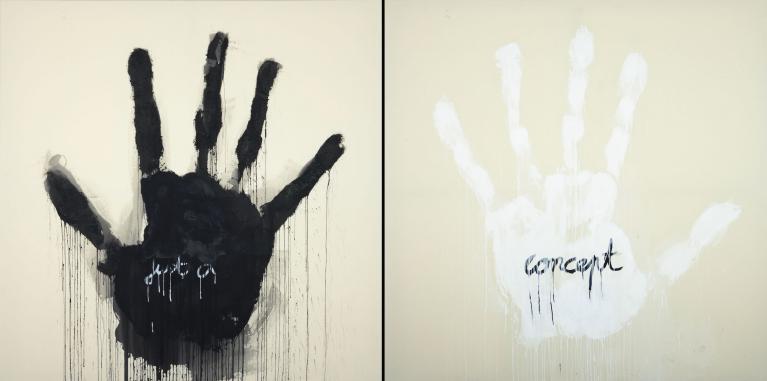 Mwangi Hutter, just a concept 2016, courtesy of the artists.
Mwangi Hutter, just a concept 2016, courtesy of the artists.
Let me take another example: the transformations that are affecting urban forms. These have been caused partly by the emergence, in the continent, of megacities and mega-regions whose density, massive spatial expansion, sheer scale of population, high levels of risks and great wealth disparities have been accompanied by dynamic and unexpected modes of urban growth. Major cities such as Lagos, Johannesburg, Kinshasa, Nairobi, Luanda, Dakar and Abidjan have continued to expand in a relatively uncontrolled, decentralized if not random way since the 1980s. Today, these cities are better understood as largely de-territorialized mega-regions with multiple urban enclaves.
Their myriad public spaces are increasingly privatized. Novel patterns of trans-regional migrations, settlement and high consumption are transforming their economic and cultural fabric, paving the way for highly stylized and hybrid or creolized forms. Visible and invisible networks of social and economic exchange participate in, but are also separate from the mainstream flows of global capital, real and fictitious. One of their defining features is not only their disjunctive social geography, but also the way in which humans and non-humans are linked together in heterogeneous and often unrecognized assemblages that contribute to the making of a unique urban civilization. More than at any other time in their recent history, these mega-regions are the direct outcome of new socio-economic forms as well as a different politics of human/non-human/techno-ecological relations.
Let’s consider, furthermore, what is going on in contemporary African art. In the Hegelian paradigm, there is obviously no such thing as “African contemporary art.” Were it to exist, it would have neither authors nor concepts, only ethnicities and their fetishes. It is enough to place completely trivial domestic objects or ceremonial objects in a museum or a gallery for them to be transformed into objects of art. In any case, the fact is that since French artist Marcel Duchamp, who nominated consumer objects as art, there are no longer works [oeuvre] as such in the west. Duchamp signed the death of the work of art in the classical sense of the term. There is no longer any image to isolate or to capture. Or at least there is no longer anything to interpret. There are only selections to be made and collections of objects to be assembled, curated and exhibited.
Since Duchamp, one might say that the act of giving form, of animation, has moved to the background. When the west “discovers” l’art nègre (Negro art) at the beginning of the 20th century, it is before all else fascinated by what it forgot—that image and form did not need to be separated; in fact they could be reconciled in the object; and their reconciliation in the object is what endowed them both with a singular animating power. Thus the vital construction of African objects at the beginning of the 20th century.
The magic of the arts of Africa and its diaspora has always derived from its power of dematerialization, its capacity to inhabit the commonplace and sensible, precisely with the aim of transforming it into an idea and an event. Historically it has come from an unambiguous recognition of the fact that the infinite cannot be captured in a form. The infinite exceeds every form—even if, from time to time, it passes through form, that is, through the finite. But what fundamentally characterizes form is its own finitude. Form can only be ephemeral, evanescent and fugitive. “To form” is to inhabit a space of essential fragility and vulnerability. This is the reason why caring and nurturing life are the main functions of the arts.
The idea of art as an attempt to capture the forces of the infinite; an attempt to put the infinite in sensible form, but a forming that consists in constantly doing, undoing, and redoing; assembling, dis-assembling and reassembling—this idea is typically ‘African’. It fully resonates with the digital spirit of our times. This is why there is a good chance that the art of the 21st century will be Afropolitan.
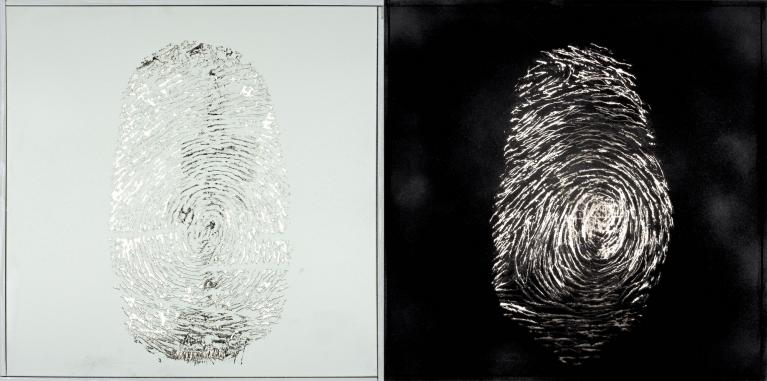 Mwangi Hutter, reflex 2016, courtesy of the artists.
Mwangi Hutter, reflex 2016, courtesy of the artists.
Whatever the case, today, another cultural geography of the world is in the making. Whether one likes it or not, Africa is firmly writing itself within a new, de-centered but global, history of the arts. It is breaking with the ethnological paradigms that will have corseted it into primitivism or neo-primitivism. More and more, the term “Africa” itself tends to refer to a geo-aesthetic category. Africa being above all the body of a vast diaspora, it is by definition a body in motion, a de-territorialized body constituted in the crucible of various forms of migrancy. Its arts objects too, are above all objects in motion, coming straight out of a fluctuating imaginary. Such too, is African modernity—a migrant form of modernity, born out of overlapping genealogies, at the intersections of multiple encounters with multiple elsewheres.
Indeed if modern art is a response to the crisis of the image, it is possible that this crisis is at the point of being resolved by contemporary afro-diasporic creation. Afro-diasporic creation is the vehicle that will allow us to escape from the crisis of the idea of the image opened up by modern art.
As we enter the 21st century, the Hegelian mythology—and its multiple actualizations—manifestly no longer holds. This mythology is now firmly unravelling. Something else is going on. It is being picked up both by Africans themselves and, curiously enough, by the world of high finance. A tacit consensus is emerging around the idea that after China, what is going on in Africa will have a huge impact not only on Africa as such, but on our planet. The emerging tacit consensus is that the destiny of our planet will be played out, to a large extent, in Africa.
If there is one single idea I wish you to take from this intervention, this is it. This planetary turn of the African predicament will constitute the main cultural and philosophical event of the 21st century. It will take us far away from the Hegelian myths I cited at the start of this lecture.
This planetary turn is the result of an on-going—not yet entirely manifest—conceptual shift about which I would like to make three comments. Firstly, that Africa is gradually perceived as the place where our planetary future is at stake—or is being played out—is due to the fact that, all around the world and especially in Africa itself, older senses of time and space based on linear notions of development and progress are being replaced by newer senses of time and of futures founded on open narrative models. Secondly, within the continent itself, Africa’s future is more and more thought of as full of un-actualized possibilities, of would-be-worlds, of potentiality. Many increasingly believe that through self-organization and small ruptures, we can actually create myriad “tipping points” that may lead to deep alterations of the direction the continent is taking. Thirdly, in fact, it has of late been a matter of tacit consensus, especially among international financial institutions and experts, that Africa represents the last frontier of capitalism.
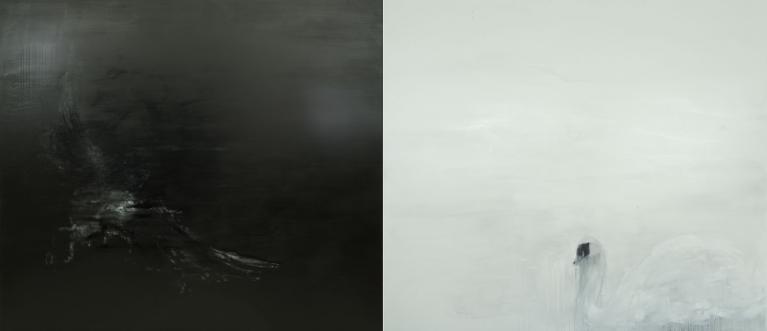 Mwangi Hutter,thinking makes it so 2016, courtesy of the artists.
Mwangi Hutter,thinking makes it so 2016, courtesy of the artists.
Let me end where I started: with Hegel, that is, with race and racism, and the future of the human species in this post-Hegelian age and the planetary turn of the African predicament. Race has once again re-entered the domain of biological truth, viewed now through a molecular gaze. A new molecular deployment of race has emerged out of genomic thinking.
Worldwide, we witness a renewed interest in terms of the identification of biological differences. In these times of global migrations, many are entertaining the dream of “nations without strangers.” Genomics has injected new complexity into the figure of the human. And yet the core racial typology of the 19th century still provides the dominant lens through which this new genetic knowledge of human difference is understood—and , indeed, is taking shape and entering medical and lay conceptions of human variation.
Fundamental to on-going rearticulations of race and recoding of racism are developments in the life sciences. I already mentioned genomics. I should add our renewed understanding of the cell, neuroscience and synthetic biology. The last quarter of the 20th century has seen the rise of a molecular and neuro-molecular style of thought that analyses all living processes in body and brain in terms of the material properties of cellular components such as DNA bases, ion channels, membrane potentials and the like. This process started during the first half of the 20th century and reached its momentum during its last quarter—and continues to wield influence in the 21st century.
It is a process that has been rendered even more powerful by its convergence with two parallel developments. The first is the emergence of the digital technologies of the information age, and the second is the financialisation of the economy. These developments have in turn shaped two sets of consequences. On the one hand, there is a renewed preoccupation with the future of life itself, and on the other, capital is doing new work under contemporary conditions. Thanks to the work of capital, we are no longer fundamentally different from things. We turn them into persons. We fall in love with them. We are no longer only persons, or we have never been only persons.
We now realise that there is probably more to the idea of race than even Hegel imagined. New configurations of racism are emerging worldwide. Because race-thinking increasingly entails profound questions about the nature of the human species in general, the need to rethink the politics of racialisation and the terms under which the struggle for racial justice unfolds—here and elsewhere in the world—today has become ever more urgent. Racism is still acting as a constitutive supplement to nationalism. How do we create a world beyond nationalism? Behind the veil of neutrality and impartiality, racial power still structurally depends on various legal regimes for its reproduction. How do we radically transform the law?
Even more ominously, race politics is taking a genomic turn. In order to invigorate anti-racist thought and praxis, and in order to reanimate the project of non-racialism, we particularly need to explore the emerging nexus between biology, genes, technologies and their articulations with new forms of human destitution. At stake in the contemporary reconfigurations and mutations of race and racism is the splitting of humanity itself into separate species and sub-species as a result of market libertarianism and genetic technology.
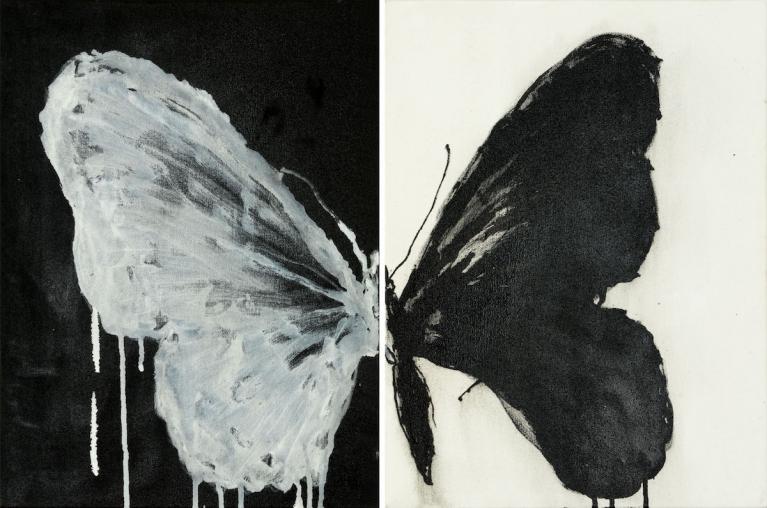 Mwangi Hutter, two to fly 2016, courtesy of the artists.
Mwangi Hutter, two to fly 2016, courtesy of the artists.
Also at stake, once again, are the old questions of who is whom; who can make what kinds of claims on whom, and on what grounds; and who is to own whom, and what. In a contemporary neoliberal order that claims to have gone beyond the racial, the struggle for racial justice must take new forms.
But simply looking to past and present, local and global re-articulations of race will not suffice. To tease out alternative possibilities for thinking life and human futures in this age of neoliberal individualism, we need to connect in entirely new ways the project of non-racialism to that of human mutuality. In the last instance, non-racialism is truly about radical sharing and universal inclusion. It is about humankind ruling in common on behalf of a larger commons, which includes non-humans—this is the proper name for democracy. In this sense, non-racialism is the antithesis of the rule of the market. The domination of politics by capital has resulted in the waste of countless human lives and the production in every corner of the globe of vast stretches of dead water and dead land.
To reopen the future of our planet to all who inhabit it, we will have to learn how to share it again, amongst but also between its humans and non-humans inhabitants, between the multiple species that populate our planet. It is only under these conditions that, aware of our precariousness as a species in the face of ecological threats, we will be able to overcome the outright possibility of human extinction opened up by this new epoch, the age of the Anthropocene.
* This article originally appeared in City Scapes, the publication of the African Center for Cities.
